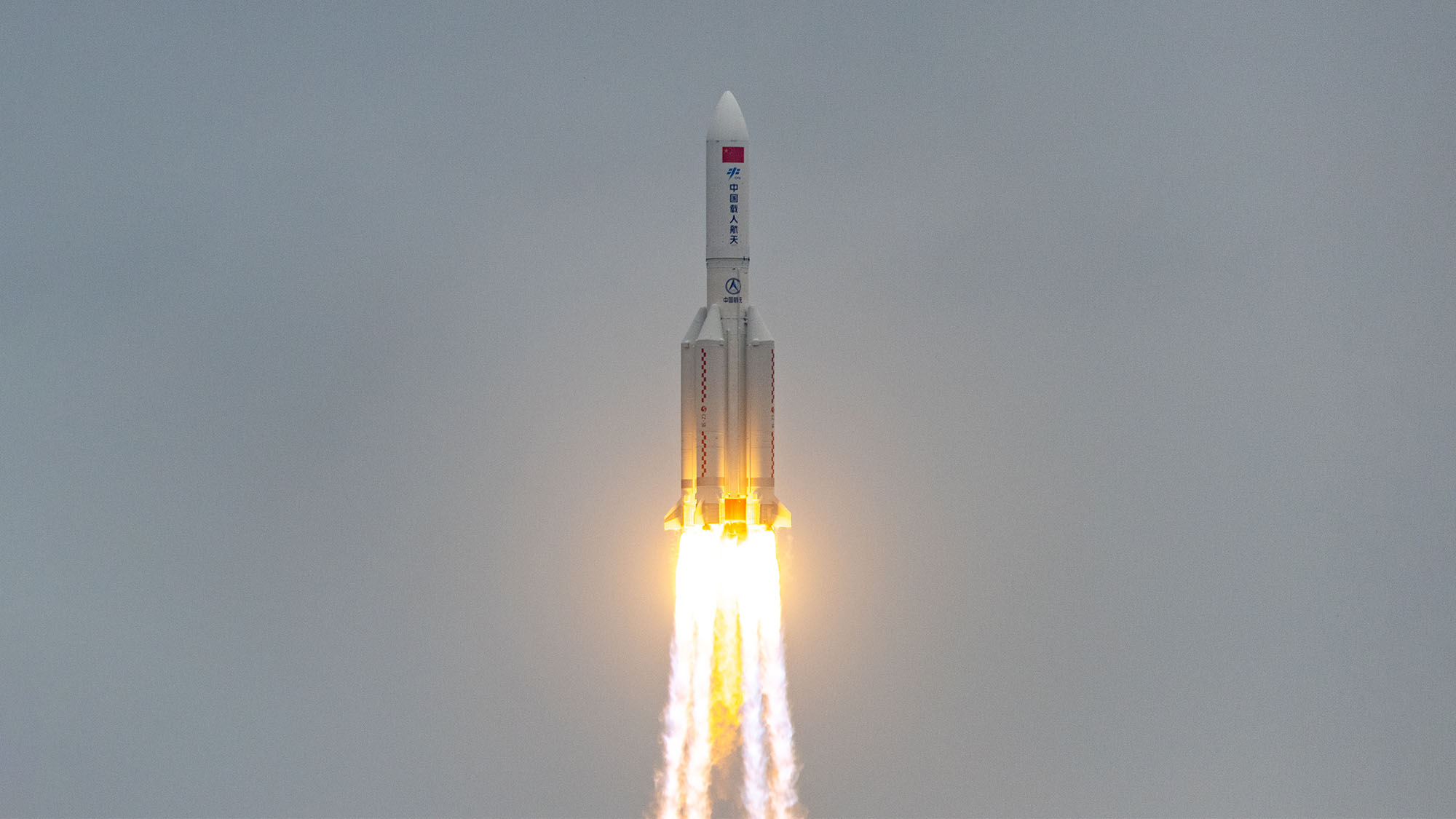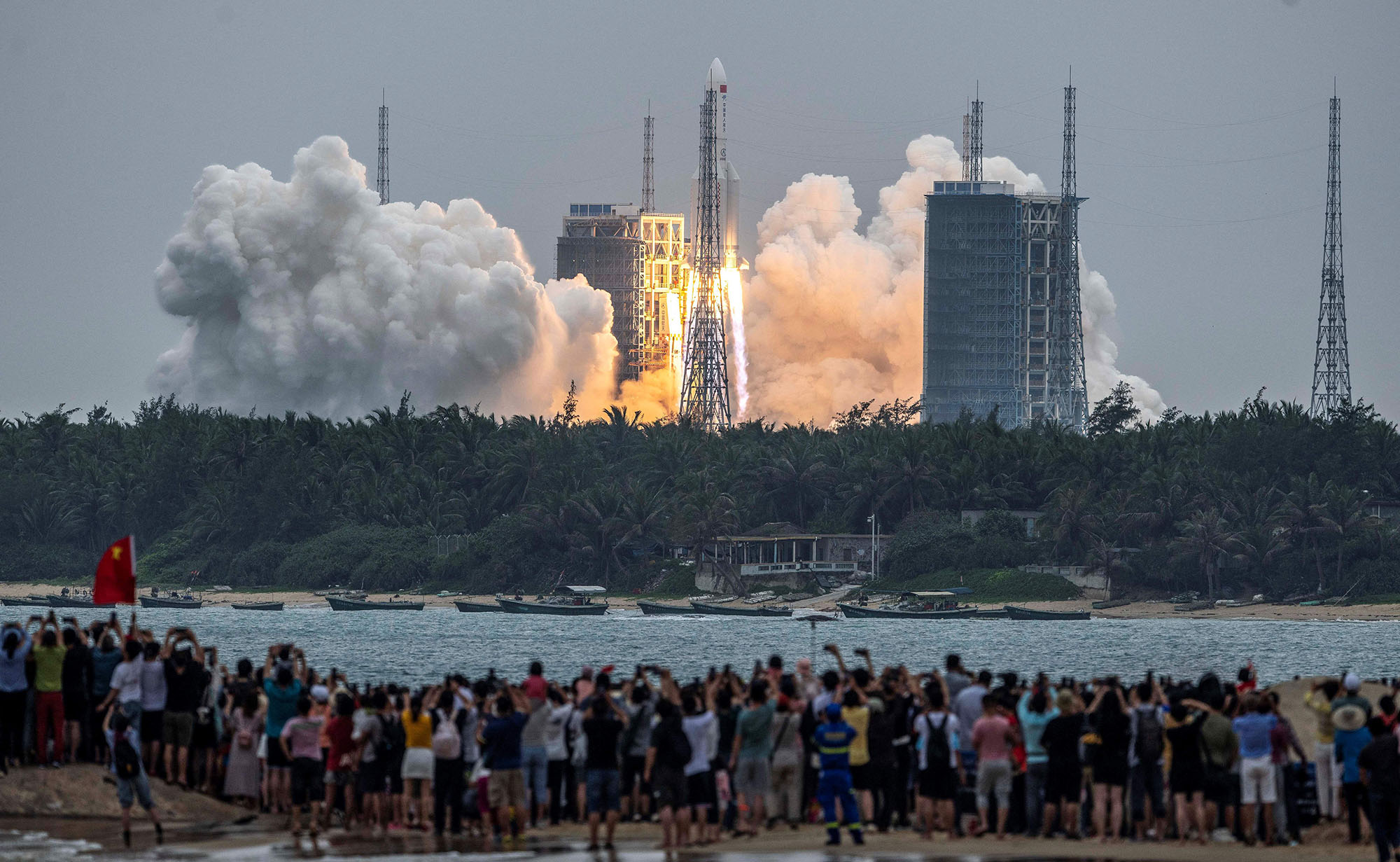Rocket debris from China's space station launch is falling back to Earth — but where?
The Long March 5B rocket's core stage could fall from space any day now.

A large Chinese rocket is set to make an uncontrolled reentry back into Earth's atmosphere, but it is not yet clear exactly where or when the debris will hit our planet.
China's Long March 5B rocket is "unpredictably" falling back to Earth after launching a part of the new T-shaped Chinese space station on Thursday local time in Wenchang, according to SpaceNews. The 22.5-metric-ton Tianhe space station module is in its correct orbit after separating as planned from the core stage of the rocket, which is now expected to re-enter in a few days or about a week.
"It will be one of the largest instances of uncontrolled reentry of a spacecraft and could potentially land on an inhabited area," SpaceNews said. That said, the more likely possibility is the core stage will fall in an uninhabited place like Earth's oceans, which cover 70% of the planet. The odds of a particular individual being hit by space debris are exceedingly low, once estimated at 1 in several trillion.
Related: Chinese rocket booster appears to crash near school during Gaofen 11 satellite launch
Plotting the trajectory of this falling rocket stage is difficult, if not impossible because there are too many uncertainties involved in calculating the effect of the atmospheric drag on the core module. Earth's atmosphere can expand or contract with solar activity, making it hard to estimate exactly when and where the rocket will come down.
"The high speed of the rocket body means it orbits the Earth roughly every 90 minutes and so a change of just a few minutes in reentry time results in reentry point thousands of kilometers away," SpaceNews said, adding that the object's orbital inclination of 41.5 degrees means it "passes a little farther north than New York, Madrid and Beijing and as far south as southern Chile and Wellington, New Zealand, and could make its reentry at any point within this area."

The rocket's anticipated return numbers among several large debris events of the last few decades, including the Chinese Tiangong space station and Europe's Gravity field and steady-state Ocean Circulation Explorer (GOCE). That said, most of the debris tends to burn up in the atmosphere and only the very largest pieces would come down to the ground. Launching states also generally try their best to point a returning piece of debris back to Earth and to give estimates for where it may fall.
Get the Space.com Newsletter
Breaking space news, the latest updates on rocket launches, skywatching events and more!
On Twitter, spaceflight observer and Harvard University astrophysicist Jonathan McDowell plotted the return of the Long March 5B against other large debris events, not least of which was the uncontrolled return of NASA's 76-ton Skylab space station nearly 42 years ago. Ground controllers were able to steer the space station somewhat over its planned reentry point over the Indian Ocean, but the debris track stretched much further than expected.
"To summarize: this one is bigger than anything recent, but not as big as Skylab and its ilk back in the day," McDowell said on Twitter of the Long March 5B's return.
This morning's Tianhe altitude plot; the Tianhe space station remains in a 352 x 385 km orbit. The CZ-5B core stage has decayed from an initial 170 x 375 km orbit to 165 x 326 km; drag at perigee causes a reduction of apogee. pic.twitter.com/X0ZQIiEqUEMay 3, 2021
China plans a busy construction schedule on the space station, with state media reporting the construction should be finished by the end of 2022. Much like the International Space Station, the Chinese complex will include several modules, requiring 10 additional launches: two more module launches, four crewed missions and four cargo vessel flights, as reported by China Global Television Network (CGTN).
Follow Elizabeth Howell on Twitter @howellspace. Follow us on Twitter @Spacedotcom and on Facebook.
Join our Space Forums to keep talking space on the latest missions, night sky and more! And if you have a news tip, correction or comment, let us know at: community@space.com.

Elizabeth Howell (she/her), Ph.D., was a staff writer in the spaceflight channel between 2022 and 2024 specializing in Canadian space news. She was contributing writer for Space.com for 10 years from 2012 to 2024. Elizabeth's reporting includes multiple exclusives with the White House, leading world coverage about a lost-and-found space tomato on the International Space Station, witnessing five human spaceflight launches on two continents, flying parabolic, working inside a spacesuit, and participating in a simulated Mars mission. Her latest book, "Why Am I Taller?" (ECW Press, 2022) is co-written with astronaut Dave Williams.









